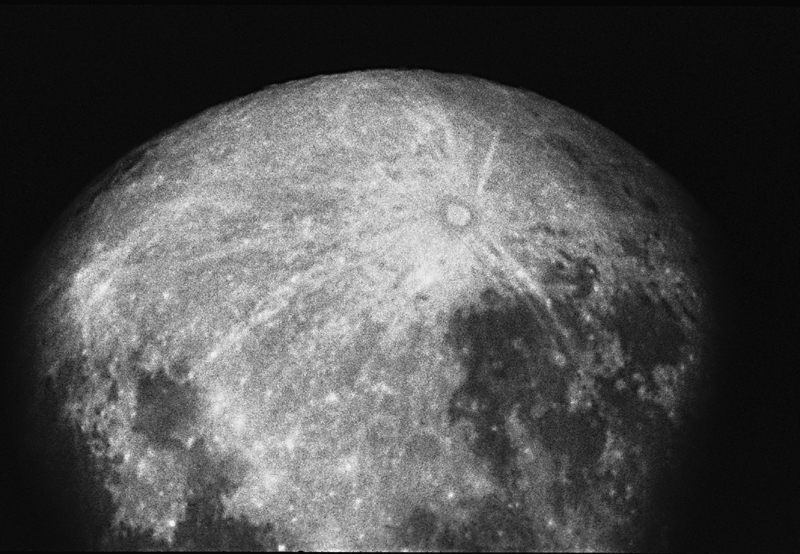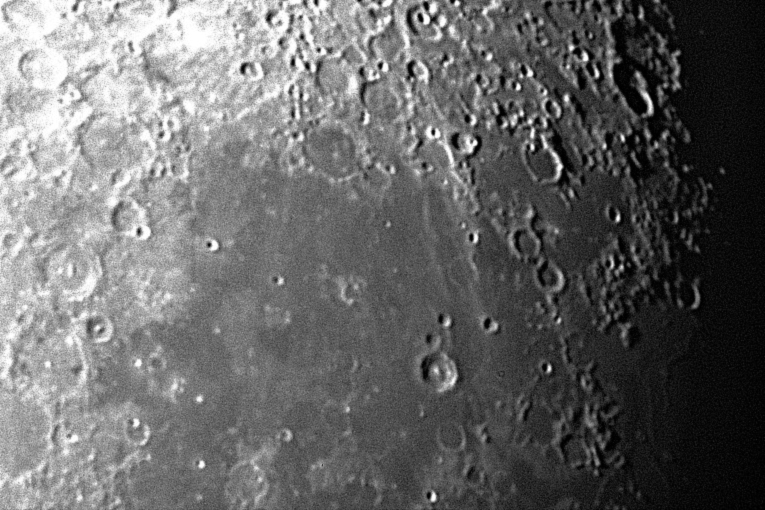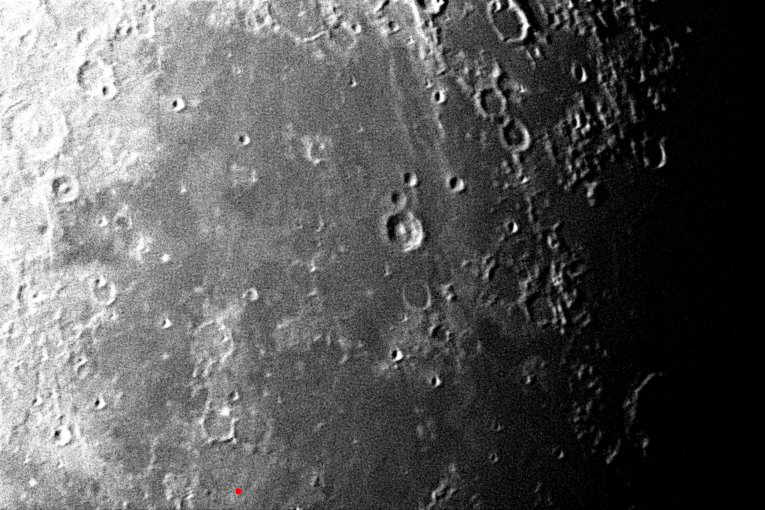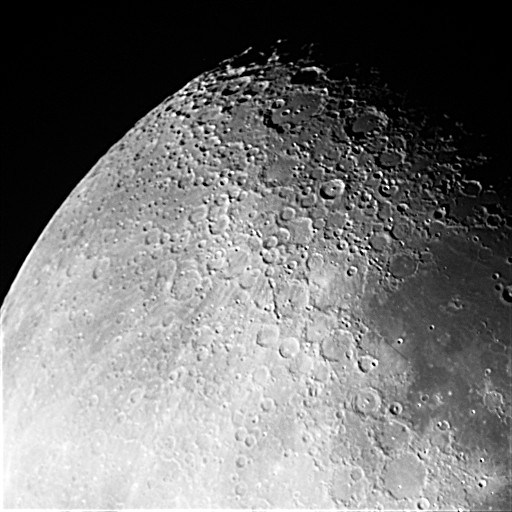
1/500 second exposure, Kodak Ektachrome 400 slide film.
10" f/9 newtonian telescope at prime focus.

Mare Nubium is a large, irregular shaped mare to the east of Mare Humorum. To the south, lies the promient crater Tycho with its spectacular ray system. One of these rays cuts across Mare Nubuim. Alongside this ray on the mare is the crater Bullialdius. On the southern edge of the maria is the large flooded crater Pitatus.
The northern portion of Mare Nubium is split in two by a tongue of higher ground. These are the Fra Mauro highlands, landing site of Apollo 14. The crater Fra Mauro is situated near the bottom of this tongue, however it does not show up well this close to full moon due to the lack of shadows. In the second picture below, this region appears much clearer. The approximate landing site of Apollo 14 is indicated by the red dot.



Shortly after first quarter phase, The feature on the eastern edge of Mare Nubium known as the Straight Wall becomes visible. It can be seen in this image as a thin dark line. This marks a fault line where on side has been raised up by about 120m. When the Moon is waxing, the shadow cast by the ridge is visible as a dark line. However when the Moon is waning, the ridge is visible as a bright line as the sun raflects of the slope.